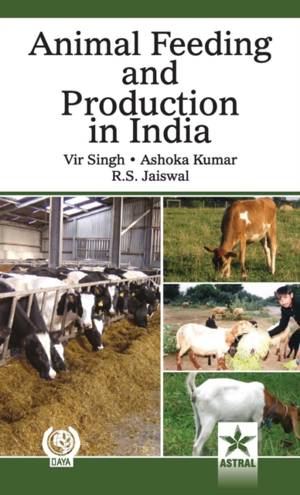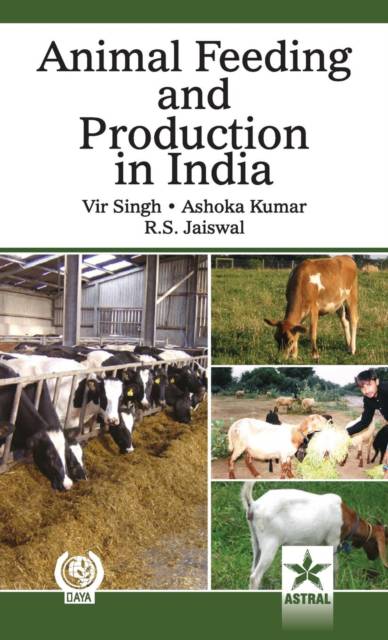
- Afhalen na 1 uur in een winkel met voorraad
- Gratis thuislevering in België vanaf € 30
- Ruim aanbod met 7 miljoen producten
- Afhalen na 1 uur in een winkel met voorraad
- Gratis thuislevering in België vanaf € 30
- Ruim aanbod met 7 miljoen producten
Zoeken
€ 121,45
+ 242 punten
Omschrijving
Animal Feeding and Production in India, an edited work of the prominent scholars and renowned experts at the prestigious GB Pant University of Agriculture and Technology, Pantnagar. Especially structured for Indian farmers, livestock owners, dairy entrepreneurs, animal ecologists, researchers, and students, the book attempts to cover all aspects of livestock production and feeding. All important livestock species - cattle, buffaloes, Angora rabbits, goat, sheep, poultry - which are reared in India and serve rural economies to a great extent have been covered in the chapters. Issues such as total mixed rations, nutritive value of cultivated fodders, ethno-medicines, draught animal power, Angora rabbitry, fostering nutritive value of poorly digestible straws, livestock-mediated agro-ecosystem services, rangeland resources, unconventional feeds such as mustard straw, etc. have been intensively discussed. The last chapter of the book beautifully answers questions frequently asked by the farmers. In essence, the book could be of vital significance for sustainable livestock production and feeding and for augmenting livestock based livelihoods.
Specificaties
Betrokkenen
- Auteur(s):
- Uitgeverij:
Inhoud
- Aantal bladzijden:
- 200
- Taal:
- Engels
Eigenschappen
- Productcode (EAN):
- 9788170359463
- Verschijningsdatum:
- 1/01/2011
- Uitvoering:
- Hardcover
- Formaat:
- Genaaid
- Afmetingen:
- 140 mm x 216 mm
- Gewicht:
- 381 g

Alleen bij Standaard Boekhandel
+ 242 punten op je klantenkaart van Standaard Boekhandel
Beoordelingen
We publiceren alleen reviews die voldoen aan de voorwaarden voor reviews. Bekijk onze voorwaarden voor reviews.











